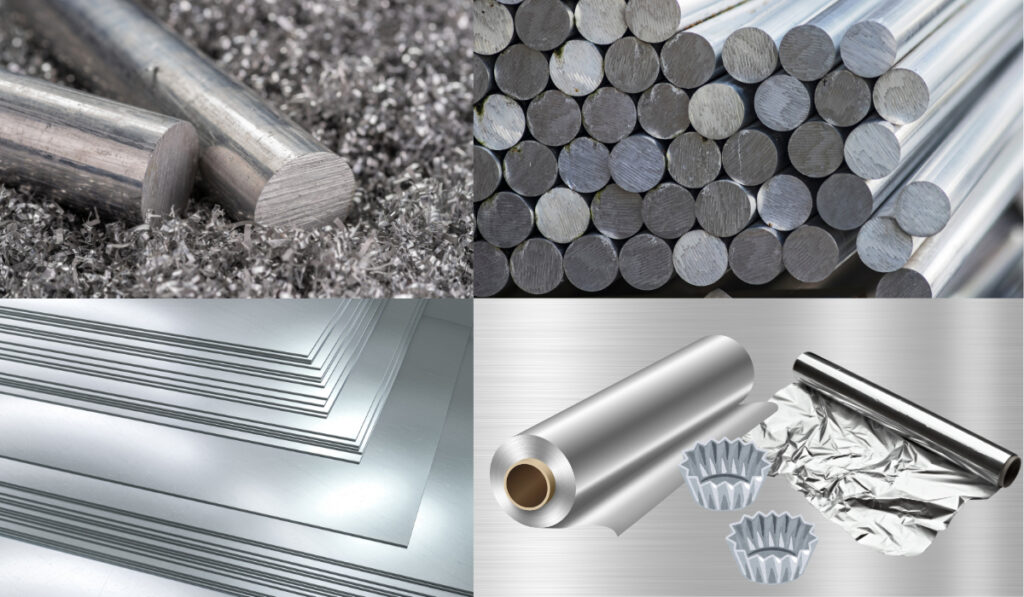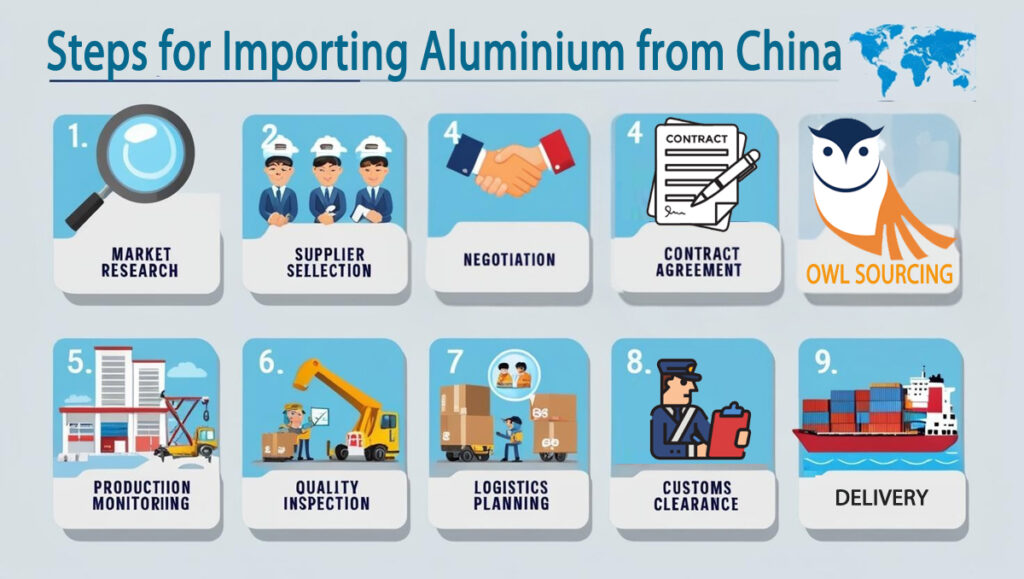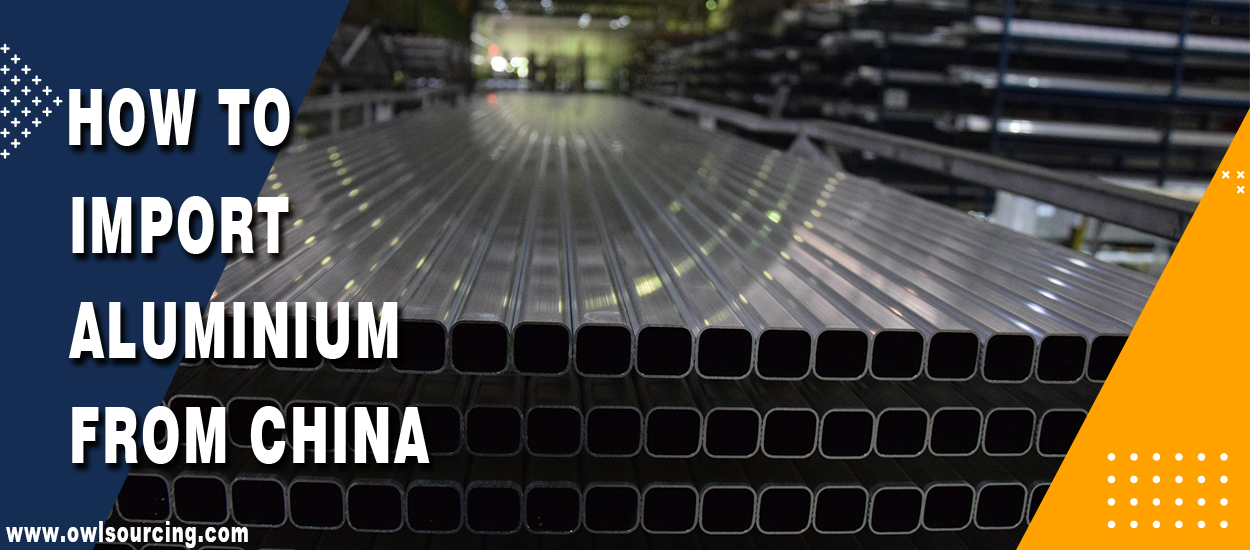Aluminium, a valuable material for the construction, automotive, and electronic industries, occurs in many forms and is an indispensable factor.
Being the world’s largest exporter, China has the most to offer in terms of the global supply of aluminium, given its surfeit of resources and excellence in advanced manufacturing.
Chinese companies are churning out all kinds of aluminium products, from sheets to alloys, for worldwide markets.
In the complex sourcing market I have experienced for 15 years, I will guide you on how to import aluminium from China.
Deeply investigating areas, trusted professional suppliers, and important steps for smooth and effortless procurement! Let’s get started.
Types of Aluminium Products Available in China

China is the dynamo of world trade with its production capacity. However, another reason why it is the world’s largest market is its rich mineral resources.
China produces 59% of global aluminium, which is one of the indicators of its competitiveness in the sector.
In short, we are talking about a market with the richest resources, the widest product range and the largest manufacturers.
| Country | Production Capacity | Year | |
| thousand tonnes | |||
| Rank | World | 70 | 2023 |
| 1 | China | 41,5 | 2023 |
| 2 | India | 4,1 | 2023 |
| 3 | Russia | 3,8 | 2023 |
| 4 | Canada | 3 | 2023 |
| 5 | United Arab Emirates | 2,7 | 2023 |
- Aluminium Sheets are light, flat pieces buildable to whatever size and thickness readily available in the market in the construction, automotive, and packaging fields.
- Aluminium Profiles are extruded in shapes to assist in specific industrial uses like windows, doors, and furniture.
- Aluminium Coils can be used for roofing, cladding, and electronics in continuous coil form.
- Aluminium Tubes, of course, are tubular pieces: they serve the plumbing and are essential in an air conditioning system.
- Aluminium alloys are used mostly in machinery and the automotive industry to mix with other metals.
| Product Type | Description | Applications |
| Aluminium Sheets | Thin, flat pieces of aluminium, customizable in size and thickness. | Construction, automotive, and packaging. |
| Aluminium Profiles | Extruded shapes for specific industrial uses. | Windows, doors, furniture. |
| Aluminium Coils | Continuous rolls of aluminium for versatile uses. | Roofing, cladding, and electronics. |
| Aluminium Tubes | Cylindrical structures in various diameters. | Plumbing, air conditioning systems. |
| Aluminium Alloys | Mixtures of aluminium with other metals for added strength. | Aerospace, automotive, and machinery. |
Cooperating with an expert ensures that the type of product is right for your application, possibly saving performance and cost.
It would be more accurate to modify the question of How to import aluminium from China as follows.
Who should we get support from for the effective and trouble-free management of the process of importing aluminium from China?
Importing Aluminium from China—Made Efficient and Reliable
At Owlsourcing, we bring you straight to vetted, audited aluminium manufacturers, saving you the hit-or-miss exercise of searching through countless online directories. From raw materials, extrusions to finished aluminium parts, we handle everything from factory identification to delivery.
✅ Source directly from vetted industrial manufacturers
✅ Obtain accurate quotes and in-depth supplier analysis
✅ Have full-service support—procurement, production management, and global logistics
🌍Book your consultation today and let Owlsourcing locate your best-fit production partner for aluminium sourcing.
With Owlsourcing, you understand exactly what you’re getting paid for. Every quote is clear, itemised, and according to your exact project specifications, no surprise charges, no vague terminology. You have total control over sourcing, production, quality control, and shipping costs, so you can plan and budget with assurance.
Finding Reliable Aluminium Suppliers in China
Every supplier specialises in different kinds of aluminium products, ranging from sheets and profiles to coils and alloys, thus catering to various needs of industries around the globe.
When considering business with any aluminium supplier, it is also essential to examine their manufacturing capabilities, certifications, and adherence to international standards.
Today, when aluminium prices seem to remain competitive, Chinese aluminium suppliers usually tend to be capable of customisation, ensuring a great threshold in direct pricing to source projects tailor-made.
Starting a search on how to import aluminium from China requires identifying the best Chinese aluminium suppliers and regions.
| Region | Major Cities | Leading Companies |
| Shandong Province | Binzhou | – China Hongqiao Group |
| – Weiqiao Aluminium | ||
| Xinjiang | Urumqi | – East Hope Group |
| – Xinjiang Zhonghe Aluminium | ||
| Henan Province | Zhengzhou | – Henan Zhongfu Industrial Co., Ltd |
| – Chalco Henan | ||
| Guangdong | Foshan | – Guangdong Xingfa Aluminium |
| – Asia Aluminium Group |
Key Regions for Aluminium Manufacturing in China
It’s essential to understand the key regions, namely the areas that house the most significant aluminium manufacturers in China, which possess a diverse range of products and reliable supply chains.
Strategic sourcing from such key regions will ensure that competitive-priced, high-quality aluminium is available.
Role of a Sourcing Agent in Importing Aluminium from China
The China aluminium supplier network is vast and a bit tough for any company to manoeuvre.
Therefore, A China sourcing agent swings to the position; these play a pivotal role in scrutinising suppliers for credibility, negotiating favourable terms, and assuring smooth communication.
With their adept knowledge of the local market and workings of regulations, OwlSourcing promises a smooth, trouble-free procurement process.
Steps for Importing Aluminium from China

When you decide to buy aluminium from China, multiple necessary steps must be followed to achieve both efficiency and a smooth transaction cycle. Presenting these key stages:
- Market Research: Know what aluminium products you are looking for, like sheet strips, profiles, or coil, and determine the demand on the market for such products.
- Supplier Selection: After the certification, their production capacity and conformity with global measures are considered in depth to build a list of possible aluminium suppliers from China.
- Negotiation: Conversing on prices, product-quality specifications, customisation, brand, reorder criteria, and LCV delivery terms to agree upon the least for a good supply.
- Contract Agreement: A fine-detailed contract showing product specifications, payment terms, and the particulars and terms of delivery is present.
- Production Monitoring: Continuing on the factory at every bit of stage to see that methods and manners are duly enforced.
- Quality Inspection: Check post-production in the run-up for product quality and standard compliance.
- Logistics Planning: Suitably select transport and packaging to avoid transit spoilage.
- Customs Clearance: Have all documentation in order, with invoices and Certificates of Origin, to facilitate customs processing.
- Delivery: Bring all the cargo smoothly to your address without any delays or damage.
Every pedant procedure must be carried out with complete conscientiousness and specialised skill in reducing risks and improving the process.
Another residual option may be the use of a sourcing agent, which will further make things simple and result in the best.
Quality Control Tips for Aluminium Products
Quality is the key factor when acquiring aluminium solutions.
Whether you buy from aluminium wholesale suppliers in China or set up your production with the assistance of custom manufacturers, quality control is critical at each stage.
Inspection remains the insurer that the products meet international standards and correspondingly agree with your specific requirements, thus preventing cost errors and delays.
- Raw Material Inspection
- Melting and Casting
- Extrusion and Rolling
- Heat Treatment
- Final Inspection and Testing
- Compliance with Standards: ISO 9001, ISO 14001, ASTM, EN
Minimal risk and long-lasting business stability are the keys to the Aluminium wholesale China market.
The most significant motto of long-term business strategy is the exact operation of quality control activities.
Negotiating Prices and Terms with Aluminium Suppliers
To make a successful deal in the Chinese aluminium market, you need to be well aware of the industry’s price movements.
You need to know the industry well and be aware of other suppliers’ product prices and payment terms.
The secret is to be aware of market developments, calculate the power behind suppliers’ offers and understand their cost structures.
How to import aluminium from China seems to be a question that covers some technical parameters. Sometimes, companies offer bigger discounts on cash payment options.
Sometimes, the demand for the product in the market is very high, and in such cases, it makes more sense to negotiate the payment terms instead of the price.
Shipping and Logistics for Aluminium Imports from China
Shipping aluminium from China, time is a priority for a buyer waiting for raw materials for production in another destination.
In other words, logistics costs aside, the main determining factor is the deadline, and such companies should work with their suppliers with a deadline-oriented approach.
If your production will stop in case of delays in products, your freight target should be time + cost-oriented.
If you are importing a product with stock, this time, your target will be to reduce the shipping cost, not the delivery time.
Thus, professional sourcing service plays a significant role in expediting efficiency and cost-effectiveness across all stages if one is gonna know how to import aluminium from China.
Customs Clearance and Regulations for Aluminium Imports
Customs for aluminium import from China involve two stages: the export customs process in China and the import customs process in your country.
Both require precise coordination to avoid delays. Chinese suppliers should ensure documents like invoices, packing lists, certificates, and bills of lading are prepared accurately.
Importer companies need to ensure that customs processes run smoothly. Otherwise, every mistake returns to wasting time, additional costs, and penalties.
The last step in a process that starts with the question of How to Import Aluminium from China is customs procedures.
The last step becomes the first step in the exporter’s country. Therefore, you should manage customs processes very well.
Essential Documents and Requirements for Importing Aluminium from China
| Document / Requirement | Purpose | Notes |
|---|---|---|
| Commercial Invoice | Provides a detailed summary of the transaction, including value, quantity, and description. | Must align with customs declarations. |
| Packing List | Lists the contents of each package and shipment details. | Useful for both customs and warehouse handling. |
| Bill of Lading (B/L) | A transport document issued by the carrier confirming receipt of goods for shipment. | Required for taking delivery at the destination port. |
| Certificate of Origin | Confirms the country where the aluminium was manufactured. | May be required for tariff purposes or preferential trade agreements. |
| Import Licence (if applicable) | Legal permission to import restricted goods like aluminium extrusions or sheets. | Check with the Australian Border Force or the local authority if a licence is required for your product. |
| Customs Duties & Taxes | Import tariffs applicable to aluminium products. | Ensure accurate HS codes are used to calculate duties correctly. |
| Customs Clearance Timeline | Estimated 2–3 working days once all documents are in order. | Delays may occur if documentation is incomplete or misdeclared. |
| Professional Support | Work with customs brokers or freight specialists. | Experts such as Owlsourcing can help prevent delays and ensure compliance. |
Buying aluminium from China to Australia is highly economical, but obtaining an estimate of the shipping price involved is crucial to efficient budgeting and logistics planning.
Here is the breakdown of the typical costs involved in the seaborne shipment of aluminium from major Chinese ports to the ports of Australia.
Sea Freight Costs for Aluminium Shipments
Sea freight is the most affordable method of shipping aluminium from Australia to China in bulk orders. Sea freight costs vary according to the weight and size of the cargo, the origin port, the destination, and any extra services such as insurance of cargo or special handling.
Approximate Cost Range
Freight from the ports of China, such as Shanghai or Shenzhen, to significant Australian ports (e.g., Sydney, Melbourne) typically ranges from $90 to $150 per cubic meter (CBM).
Factors that influence cost:
- Cargo weight and volume
- Aluminium type (e.g., billets, sheets, ingots)
- Season and carrier rates
- Port discharge and loading fees
Container Shipping Options
For more significant aluminium shipments, sea freight in containers is the preferred route. Here’s what to anticipate in terms of cost:
20-Foot Container (FCL):
Though prices differ based on market rates, shipping a 20-foot container from China to Australia typically would be between $2,000 and $3,500, based on distance, fuel surcharges, and delivery fees.
Comparison with U.S. Rates:
For comparison, shipping to the U.S. West Coast ranges from $2,500 to $4,300, with East Coast shipping being $4,800 due to the longer route. Containers shipping to Australia are offered faster transit times and lower per-unit rates by and large.
Need to ship aluminium from China to Australia? Contact us for a competitive and customised freight option.
Read More:
- Top Packaging Manufacturers from China
- How to Choose the Right Prototype Company in China
- How to Import Windows and Doors from China
- China Sourcing Companies for Custom Products
Final Thoughts
Aluminium is a specific product that requires precision and expertise. OwlSourcing guarantees a seamless sourcing experience with connections from all the top China aluminium suppliers.
If you need aluminium sheets, profiles, or custom alloys made, they have your needs covered with the niche solutions that may best suit you.
We take on this responsibility for you! Professionally, our team manages everything from supplier selection to the coordination of logistics.
Minimising risk whilst meeting your requirements forms the basis of our commitment.
Trust OwlSourcing to learn how to import aluminium from China; it is simple but effective, compliant, and always puts your satisfaction first!


